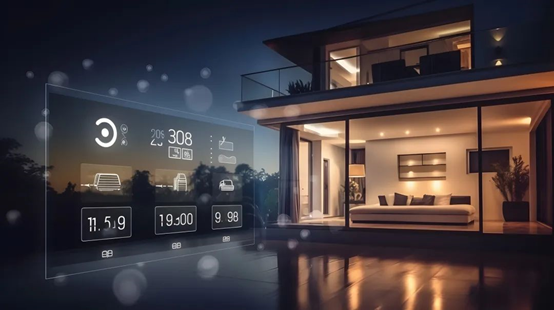
Smart Home Lighting: A Beginner’s Guide
Smart home lighting is revolutionizing how we interact with our living spaces—far beyond just flipping a switch. It blends technology, aesthetics, and wellness into a seamless experience. Whether you’re aiming to enhance ambiance, save energy, or improve health through lighting, this guide will walk you through the essentials of smart lighting, tailored for beginners worldwide.
1. What Is Smart Home Lighting?
Smart home lighting refers to wirelessly connected systems (via Wi-Fi, Bluetooth, Zigbee, etc.) that let you control lights via apps, voice assistants (e.g., Alexa, Google Assistant), or automated routines. Core features include:
Remote Control: Turn lights on/off or adjust settings from anywhere.
Adjustable Color & Brightness: Shift from cool white (5000K) to warm yellow (2700K) for different moods.
Automation & Scenes: Schedule lights, simulate sunrise wake-ups, or sync with devices like locks and thermostats.
Color Options (Optional): Some bulbs offer 16 million colors for parties or movie nights.
2. Why Choose Smart Lighting?
Energy Savings & Cost Control
LEDs use 80% less energy than incandescent bulbs and last up to 25,000 hours.
Smart dimming and scheduling reduce waste, lowering electricity bills.
Personalized Experiences
Adapt lighting to activities: cool white (4000K) for reading, warm tones (2700K) for relaxation.
Create one-tap scenes like “Movie Mode” or “Dinner Ambiance.”
Security & Convenience
Simulate occupancy remotely to deter intruders.
Voice control offers hands-free ease, ideal for mobility-limited users.
Health Benefits
Mimic natural light cycles to regulate circadian rhythms and improve sleep.
Low blue light and flicker-free designs protect eye health (e.g., Aqara Nebula Ceiling Light).
3. Types of Smart Lighting Products
Smart Bulbs
Beginner-Friendly: Replace traditional bulbs; support dimming and color tuning (e.g., Philips Hue, TP-Link Kasa).
Compatibility Check: Match bulb bases (E26, E12) and ecosystems (e.g., Apple HomeKit, Google Home).
Smart Switches Plugs
Control non-smart fixtures: Aqara switches work with Zigbee and standard lights.
Wireless multi-control: Add switches without rewiring.
Smart LED Strips & Ambient Lights
Flexible installation: Behind TVs, under cabinets, or in ceiling coves (e.g., Nanoleaf panels).
Music sync: Sync color changes to beats for immersive entertainment.
Sensors & Automation
Motion sensors: Auto-lighting for hallways or bathrooms.
Ambient light sensors: Adjust brightness based on natural light.
4. How to Set Up a Smart Lighting System
Define Needs Budget
Starter Kit: Smart bulbs for one room (50–100).
Whole-Home System: Philips Hue bridge + multi-room setup ($200+).
Choose an Ecosystem
Closed Systems: Philips Hue (reliable but pricier).
Open Platforms: Matter-compatible brands (e.g., Aqara, Nanoleaf) for cross-brand harmony.
Installation Setup
Bulbs/Switches: Replace existing fixtures (power off first).
Strips/Sensors: Ensure power access; use dual power for long strips (>10m).
App Setup: Download brand apps (e.g., Hue, Kasa) and follow prompts.
Create Automations Scenes
Schedules: Morning wake-up lights, evening dimming.
Geofencing: Auto-off when leaving, auto-on when returning.
Device Syncing: Entry lights on when doors unlock; dimming when TV starts.
5. Common Issues & Solutions
Network Reliability
1.Zigbee/Thread protocols save energy and reduce lag vs. Wi-Fi.
2.Use mesh networks or repeaters for weak Wi-Fi coverage.
Compatibility Hurdles
1.Ensure smart switches (e.g., Aqara H1) support traditional bulbs.
2.Verify dimmer compatibility to avoid flickering.
Design Pitfalls
1.Avoid ceiling-mounted “no-main-light” designs if room height <2.8m; use surface track lights instead.
2.Pair glare-prone tiles with matte finishes or anti-glare fixtures.
Health & Safety
1.Prioritize RG0-certified, flicker-free lights for kids’ rooms.
2.Outdoor lights need IP44+ waterproof ratings.
6. Top Brands & Budget Options
Premium: Philips Hue (vivid colors, robust ecosystem).
Budget-Friendly: TP-Link Kasa (Wi-Fi direct, no hub needed).
Whole-Home: Aqara (Matter-ready, seamless device pairing).
Creative Flair: Nanoleaf (modular panels for art-tech fusion).
7. The Future: Smarter, More Connected
With the Matter protocol bridging brand divides and AI-driven adaptive lighting, smart systems will learn your habits and moods—shifting from utility to wellness partner.
Next Steps: Start with one smart bulb, experiment with voice control, and expand into automations. Remember: Lighting should serve you—balancing function, beauty, and health.
Learn More:
Home Kitchen Lighting Selection: A Functional and Stylish Guide
(This guide draws on product tests from Philips Hue, Aqara, and TP-Link, plus user insights on Zhihu and SMZDM.)
